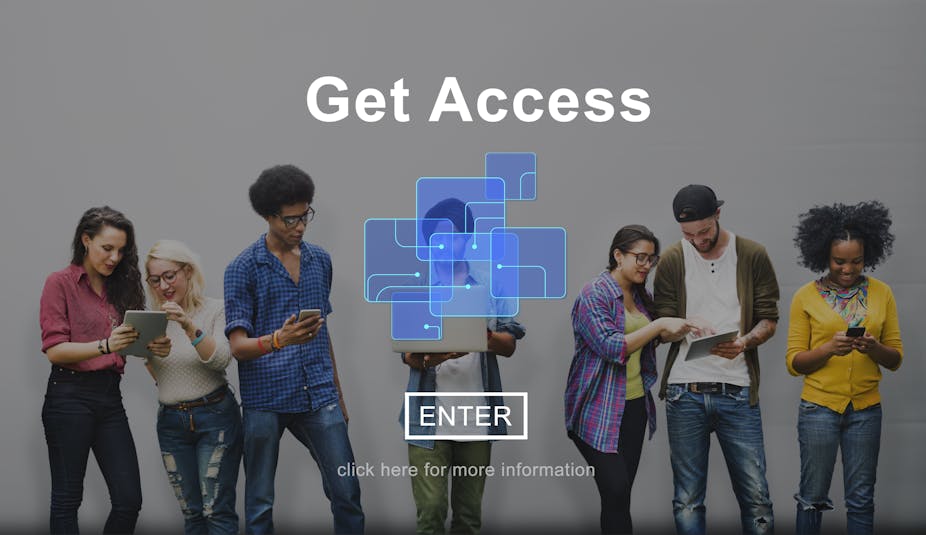A big barrier to lifelong learning can be the cost of resources. There are worldwide initiatives to change this, though, and it’s helpful to know how to use these resources legally.
One such arrangement is Creative Commons, considered to be the global standard for open licences. These were written by legal experts around the world and dedicated to the public domain. They enable teaching and learning resources to be made available in the public domain. This is usually in their digital form under an open licence and without cost other than the cost of access to the internet. Users of the resources may use, adapt and redistribute them with no or few restrictions.
Creative Commons has national chapters in 43 countries. Chapters coordinate the work of individual members and institutions in any country that supports the Creative Commons Global Network.
South Africa is on the cusp of making major changes to its copyright law. A new bill is waiting for the signature of President Cyril Ramaphosa. Open licences like Creative Commons are defined in the bill. The bill also states that it: “does not prohibit or otherwise interfere with open licences or voluntary dedications of a work to the public domain”.
The changes the bill will bring about will expedite the development of open educational resources that will provide free access to learning material, particularly to those who don’t have access. Or those who can’t afford them.
The bill’s provisions will open the door for millions of people to access learning materials in various formats. In turn, this could accelerate social and economic development, education and creative opportunities and enable people to become active citizens.
A global system
The Creative Commons licences work in legal systems around the world, and are framed within national copyright laws. Over 1.6 billion works carry Creative Commons licences. These are supplementary to traditional copyright and do not replace it.
The licence explains to learners that they may use the work free of charge and informs them if there are any restrictions or things to watch out for or not to do with the published work.
Using the standardised international licences issued by Creative Commons helps to clarify what people may do with the free and shareable resources. It indicates how they may be adapted to different circumstances and even be mixed with other resources.
It is unusual (and impractical) for institutions to create their own copyright licence for resources. Creating a separate open source licence for learning materials creates confusion among learners, academic staff and others who are not copyright experts and therefore cannot be sure what can be legally done with the resources.
Also, custom-made licences may conflict with the terms and conditions of Creative Commons licences and affect how material can be used.
Creative Commons licences have a legal framework based on national copyright laws and are presented in three different versions: machine-readable, user-readable and legal documents.
Custom-made licences don’t generally have these versions. This can present problems should any legal issue arise. This is why Creative Commons has become the “global standard” for open licence. It’s why “licence proliferation” (creating additional, personalised or custom-made licences) should be avoided.
Where resources have not been released for free use under a Creative Commons licence, users need to take care not to infringe national copyright laws. Even to copy and share a small piece of a resource such as a copyrighted textbook may be a legal infringement resulting in punishment under national laws.
Clauses sometimes included in a nation’s laws are “fair use” or “fair dealing”. This allows the copying of a small amount of the resource, usually for non-profit purposes. When “fair use” is applied, copying is likely to be legal only when it complies with four criteria. But the law is complex and large publishers might seek to prosecute people where they believe publishing profits may be negatively affected.
The ‘how to’
The simplest approach for authors who wish to share resources is to select a licence from those that are freely available on the Creative Commons website. Once one of the six licences is selected, a note is made on the resource that while the copyright belongs to the author or licence holder, others may use the resource under the conditions outlined in the licence.
Anyone who wants to use the resource does not need to ask the author for permission as this has already been granted and can be read in the licence.
Searching for resources that carry a Creative Commons licence can be done using the Google Advanced Search page. The last option to select on the search page (“usage rights”) allows the user to select the level of Creative Commons licence that is needed, such as “free to use” or “free to use, share, modify, even commercially”.
A specialised search for images is included on the Creative Commons website. It’s important to check the copyright on each item to ensure that the resource is licensed so that it may be freely used.
Sharing resources that carry a Creative Commons licence helps to bring more educational resources to more people. This can help to reduce costs of education, improve skills and improve lives for millions of people. Many international organisations, including the United Nations Educational, Scientific and Cultural Organisation, the World Bank and the Commonwealth of Learning, issue reports and learning resources with Creative Commons licences.
Paul G. West, a senior educational consultant, also contributed to this article.

